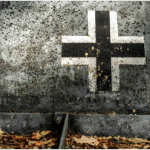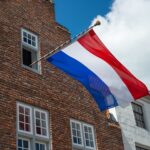Soft Power of Stone: Defending the Narrative of the Great Patriotic War

The statue of marshal Ivan Stepanovich Konev on Prague’s International Brigades’ Square has been a source of controversy for several years. Installed in May 1980 to commemorate the 35th anniversary of Czechoslovak liberation, the monument immortalises a general who, without doubt, played a decisive role in freeing much of the country from Nazi occupation. In the last years of Czechoslovakia’s communist rule and beyond, the monument served as a place of reverence, commemorating the fallen of the Second World War. Yet, its original political purpose as a tangible reminder of fraternal ties between the two communist states, in an era when the sun had slowly begun to set on the Kremlin’s domain, likewise cannot be ignored. After the fall of Czechoslovak communism, Konev’s statue remained standing while monuments to his contemporaries were being dismantled. Nevertheless, thirty years after the Velvet Revolution the sun had also begun to set on Marshal Konev. The same, it seems, cannot be said about Moscow’s ongoing desire for soft power projection into Eastern and Central Europe.
As a liberator of much of Eastern Europe, the persona of Marshal Konev is of great symbolic importance to the Russian administration. Its narrative of the Great Patriotic War has been successfully enshrined in the Russian national psyche as an untouchable symbol of national unity, valour and perseverance. Together with opposition to Nazism, the Great Patriotic War has become a rallying point through which Soviet and Russian governments have been able to erase the striking economic inequality within the Russian populace, obscure human rights violations and justify military interventions from Ukraine to Syria. Thus, it is no surprise that foreign attempts at abandoning the myth of eternal fraternity, constructed in the Eastern Bloc during the Cold War, are being vehemently opposed by Russia’s post-communist governments. The reason for this is simple – a common method of symbolic dissociation is the removal of the very monuments of Soviet ideologues and military leaders, whose purpose was not to record history but to immortalise the normative legacy of the Great Patriotic War in stone.
The disassembly of Marshal Konev’s statue had been on the agenda of Prague’s sixth district since 2015, though the monument was restored and supplemented by explanatory boards in the Czech, English and Russian languages as late as August 2018. The boards narrated the marshal’s legacy as a liberator of Eastern Europe, though they also did not neglect to remind the reader that Konev, colloquially dubbed ‘the bloody marshal’, had also been responsible for the suppression of the 1956 Hungarian Revolution, the 1961 construction of the Berlin Wall, and possibly intelligence-gathering activities prior to the 1968 Warsaw Pact invasion of Czechoslovakia. Even so, the monument continued to stir controversy and was covered in pink paint in protest of its ongoing display on multiple occasions. Meanwhile, voices protesting its removal began to sound from within the Czech communist party and several pro-Russian activists. As the Czech Republic entered lockdown to contain the spread of the COVID-19 outbreak, in early April the district council of Prague Six placed the monument into interim archival storage to ensure that the legitimate decision to remove the statue could be carried out with dignity and without excess disturbances of public order by those opposing its disassembly.
The Czech communist party and pro-Russian activists were not impressed, and neither was the Russian administration. Russia’s Investigative Committee swiftly opened a criminal case against the Prague Six district council, despite the Czech government proclaiming that Russia lacks the jurisdiction to do so. In the immediate aftermath of the statue’s removal, a group of Russian nationalist extremists stormed the Czech embassy in Moscow, throwing smoke shells into its grounds and enduing its fence with a banner reading “stop fascism” in Russian. They were not the only ones labelling the disassembly a fascist plot. Verbal attacks against the mayor of Prague Six as well as his party have since intensified, with both being compared to National Socialists by lower-level Russian officials and disinformation media outlets. As of earlier this week, both the mayor of Prague’s sixth district and the mayor of Prague as a whole, the latter being involved in a separate instance of dissociation from Russia’s influence, entered police protection after reports of several Russian citizens entering the Czech Republic using diplomatic passports, possibly posing a threat to the mayors’ life, became public.
The legitimate decision to dismantle the historically significant, albeit controversy-laden monument, has led to near-violations of Czech sovereignty and threats to life of Czech public officials. It has also been accompanied by fiery rhetoric against supposed fascist resurgence and accusations of rewriting history from among the highest circles of the Russian government. While Soviet wartime sacrifices rightfully deserve commemoration, Russian indignation is driven by the statue’s removal only marginally. Upon deeper consideration, one can recognise a desperate attempt of the Kremlin at preventing erosions of the Great Patriotic War’s symbolism.
To an administration whose domestic legitimacy stems partly from fear, partly from historical legacy and party from myth, the defence of a narrative binding the Russian people together is imperative. For if the modern Russian state did not defend one of its foundational narratives abroad, defending its legitimacy at home would become ever harder. As the 75th anniversary of the Second World War’s end nears, the narrative of the Great Patriotic War is more sensitive to challenge than usual. At a time like this, the soft power of stone becomes more than an extension of foreign policy – it becomes a statement of identity. As detractors from this identity assert their sovereignty, not to rewrite history but to secure a liberal-democratic future, we can only expect Russian resistance to such attempts to grow. So much for eternal fraternity.
Recommended Further Readings:
A BBC article discussing the recent entry-into-protection of the two mayors, alongside the broader context of detractions from Russian influence by the City of Prague: https://www.bbc.com/news/world-europe-52455223
A Guardian article discussing the criminal investigation launched against the district council of Prague Six: https://www.theguardian.com/world/2020/apr/10/russia-opens-criminal-case-after-czech-officials-remove-soviet-statue
Timothy Snyder: ‘The Road to Unfreedom: Russia, Europe and America’: https://www.penguin.co.uk/books/111/1115813/the-road-to-unfreedom/9781784708573.html
Featured Image:
Gampe (https://commons.wikimedia.org/wiki/File:Konev_Monument_in_Bubeneč_(6181).jpg), „Konev Monument in Bubeneč (6181)“, https://creativecommons.org/licenses/by-sa/4.0/legalcode



